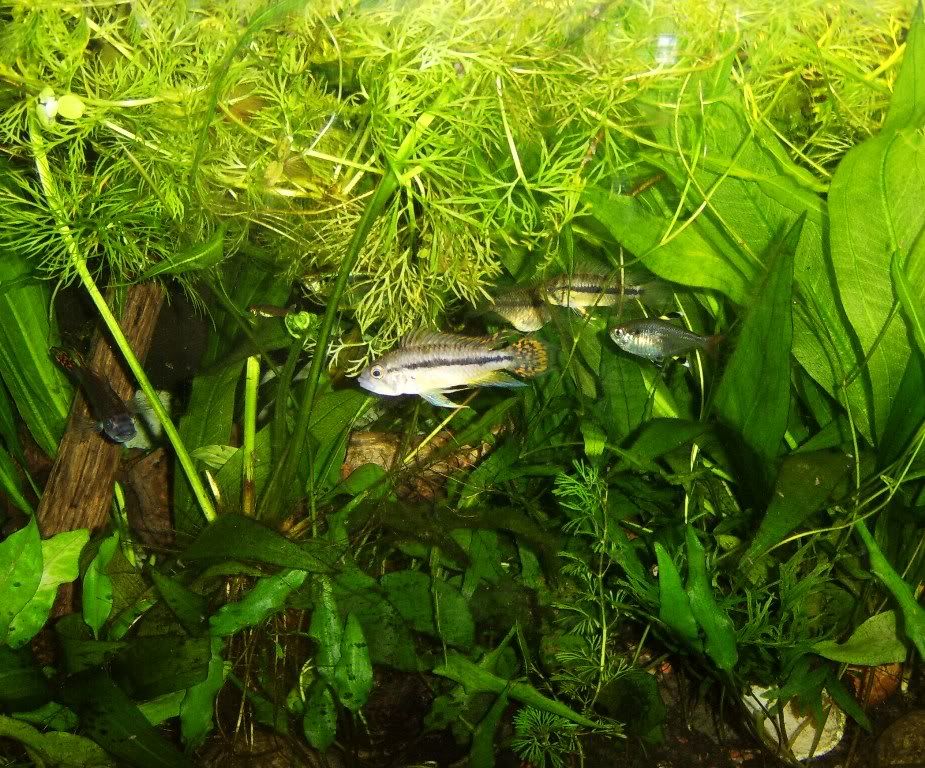Bunnie1978
New Member
- Messages
- 94
Right side of my 29g display stocked with a wild male Apistogramma Cacatuoides and 2 domestic triple red females. Also a couple bristlenose plecos.

Left side. I rescaped this tank last week. You can see one of the females nose sticking out in the back.

One of the females nesting. I couldn't really see in there very well, but it doesn't look like she's spawned yet

I had a really hard time getting great pictures of the male. He has really long fins, but not very colorful. I hope that when he breeds with the domestic females, I'll get the longer fins AND some color!




Here are some 100% wild blood A. Cacatuoides fry!!! I've been keeping apistos for 6 months, and my first brood are wilds!!!


Left side. I rescaped this tank last week. You can see one of the females nose sticking out in the back.

One of the females nesting. I couldn't really see in there very well, but it doesn't look like she's spawned yet

I had a really hard time getting great pictures of the male. He has really long fins, but not very colorful. I hope that when he breeds with the domestic females, I'll get the longer fins AND some color!




Here are some 100% wild blood A. Cacatuoides fry!!! I've been keeping apistos for 6 months, and my first brood are wilds!!!



